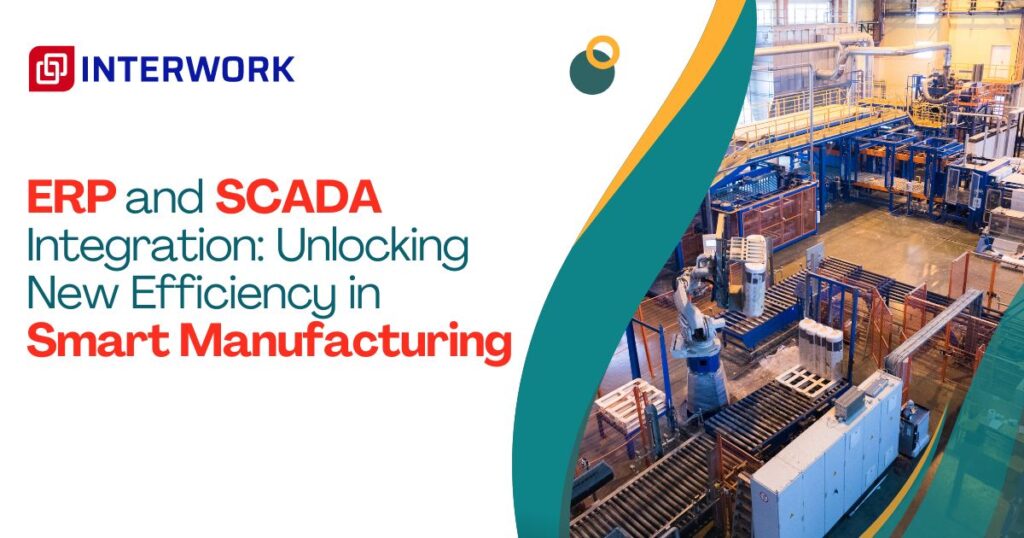
Deploying the SCADA solutions coupled with the ERP systems has become critical for today’s smart manufacturing. This integration combines the ability to manage and control processes in real-time with complex enterprise resource management so that operational and business systems can exchange data easily. The outcome is a form of optimization directed towards accuracy of processes and the decisiveness that such systems offer. This shall help to minimize duplicate data entry and maximize the visibility of different operations across the organization, as well as the ability to act accordingly to any changes.
SCADA (Supervisory Control and Data Acquisition)
It is an extensive industrial control system that the information acquired is use to regulates and supervise activities and procedures in numerous industries. This combines the physical and the digital elements of industry for the purpose of supervising and optimizing it in realtime.
Key Benefits of SCADA and ERP Integration
- Enhanced Operational Efficiency: While SCADA tackles real time production information with the enterprise planning, the combination of the two programs harmonizes them. These synchronizations also guarantee convectional production planning, inventory control and supplies chain, which enhances understanding of forecasts and resources use.
- Improved Decision-Making: Transfer of information from SCADA systems to ERP systems in real-time helps the decision makers to access up-to-date information. This facilitates decisions in time and appropriately so that operational and strategic difficulties are addresse in time.
- Streamlined Manufacturing Execution Systems (MES): Thus, MES stays in the middle of SCADA and ERP to perform its function effectively. Integration intensifies MES capabilities providing specific information on production, quality, and equipment.
- Industrial IoT (IIoT) Synergy: IIoT plays a critical role in the emergence of a smart factory. Such integration means that information from devices connected to IoT is appropriately mirrore in matters contentious between ERP and SCADA. This constructive cooperation improves prediction and prevention, operational reliability, and overall equipment effectiveness.
- Data Accuracy and Consistency: Integration is essential in keeping an only source of truth because it reduces the chances of having inaccurate data in the different systems. This eliminates drawbacks such as variance between the actual production data and the business processes.
Role and Functionality of SCADA Systems
- Data Acquisition: SCADA systems gather data from sensors and devices deployed across the process or plant. This includes variables such as temperature, pressure, and flow rates.
- Process Control: It allows operators to control machinery and processes based on real-time data. For example, adjusting a valve or starting/stopping equipment remotely.
- Alarm and Notification Management: SCADA systems generate alerts and notifications for operators when certain thresholds are exceeded or when abnormal conditions are detecte.
- Visualization and Reporting: Provides graphical representations of process data via HMIs (Human Machine Interface), which helps operators understand and interact with the system. It also generates reports for analysis and compliance purposes.
- Historical Data Logging: Stores historical data for trend analysis and reporting, which aids in performance evaluation and decision-making.
Strategies for Successful Integration
- Define Clear Objectives: Make sure that you are precise on the integration goals that matters to you most such as efficiency or accuracy of data received. Several objectives will, therefore, guide how the integration is to be achieve.
- Choose Compatible Systems: Overall, the compatibility between the SCADA systems and the ERP systems must be of the same type and level to produce data exchange between the two systems. Integration middleware is suggeste for this integration.
- Develop a Data Integration Plan: Outline the process of transferring data from the SCADA systems to the integrated ERP systems. This also includes describing the data in terms of the format of the data collected, the frequency at which the data will be update and who will be handling some of the issues of inconsistency.
- Engage Stakeholders: Ensure the members from the current manufacturing and business point of view so that the integration answer everybody’s need and there will be organisational commitment.
How can Interwork Software Solutions help you?
- Streamline Data Flow: By connecting SCADA and ERP systems, data can be transfer seamlessly between them. SCADA systems typically manage real-time industrial operations, while ERP systems handle broader business processes. Integration ensures that information flows smoothly from operational activities to business management systems without manual intervention.
- Ensure Real-Time Synchronization: Integrating these systems allows for real-time updates of data across platforms. This synchronization ensures that both the SCADA and ERP systems have the most current information, enhancing accuracy and performance. For instance, if production data is update in SCADA, this information is instantly reflect in the ERP system, improving reporting and analytics.
- Reduce Manual Data Entry: Automated data transfer between SCADA and ERP reduces the need for manual data entry. This not only speeds up data handling but also minimizes the risk of human errors, leading to more reliable and accurate data.
- Improve Operational Visibility: Integration helps eliminate data silos, providing a unified view of operations. This enhanced visibility allows for better monitoring of processes, forecasting, and control, giving you a clearer picture of performance and future trends.
Conclusion
The use of integration of SCADA systems with ERP is an effective way to improve the performance of smart factories. This integration links actual process controlling with enterprise controlling; it offers a consistent operational perspective and decision-making and supports digital business. Considering the current trends in smart factories, the utilization of SCADA and ERP systems will remain an enabler for a competitive edge and OE.
